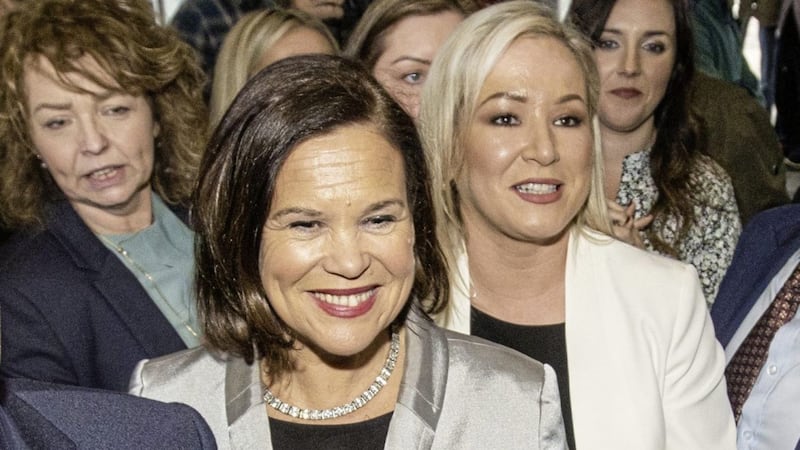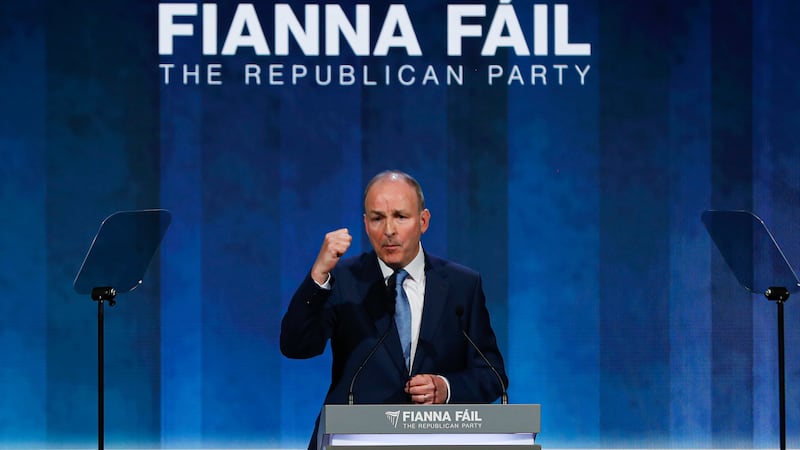THERE are two versions of a slogan about bringing an end to partition that circulated in some Irish republican circles during the early years of the Second World War.
One of them was: “Six hours, six divisions, six counties” and the other, slightly different one: “Six counties, six divisions, sixty minutes”. It was based on the idea that a conscripted citizen’s army of 250,000 people could be trained for a year in the south and then an attack would be launched at the border.
Thankfully the plan never “got legs” and, even if it had succeeded, what kind of United Ireland would you have had after such a terrible bloodbath? Nowadays, however, the prospect of achieving Irish unity by peaceful means is far from being a pipe dream although it will require consenting majorities on each side of the border. Holding referendums in both jurisdictions looks inevitable at some stage, but winning a majority in the north will be quite a challenge. The southern one should be a good deal easier, although you can never take anything for granted in politics. Bear in mind also that, if the unity proposal is defeated, the next referendum cannot be held for at least seven years.
The main proponents of unity by dual referendums are of course Sinn Féin and even their critics would acknowledge that things are going rather well for Mary Lou McDonald, Michelle O’Neill and their friends at the moment. Becoming the largest party in the Stormont Assembly was quite an achievement but, of course, in republican ideology it is mainly intended as a step towards the ultimate unity goal.
In the recent assembly election, Sinn Féin got 29 per cent of the votes and 27 of the 90 seats. The SDLP total was 9.1 per cent and eight seats. That’s a combined percentage of 38.1 and, assuming they were on the same side in a unity referendum where a simple majority would be required, that’s almost 12 per cent short of the target. Alliance got 13.5 per cent and a remarkable 17 seats in the assembly contest and if you got all their voters on side, you could run the tricolour up the flagpole at Stormont and replace the Carson statue with Pádraig Pearse or Countess Markievicz or maybe both.
Come to think of it, given his Protestant background, Wolfe Tone might be a better choice than Pearse. As regards Markievicz, she was born into the Church of Ireland and later converted to Catholicism.
It seems likely that, in due course and if a proper case were made, a reasonable number of Alliance voters might take the unity option at the ballot box but you would still need to look around for other sources of support. It hardly needs saying that it would be a waste of time approaching supporters of Jim Allister’s Traditional Unionist Voice, which garnered an impressive 7.6 per cent whilst still winning only one assembly seat. There would be no point either in knocking on the doors of Democratic Unionist Party voters who made up 21.3 per cent of the latest total with their party getting 25 candidates elected.
In the case of the Ulster Unionist Party, which secured 11.2 per cent of the vote and nine seats, their supporters might be slightly more friendly to unity canvassers and even in some cases invite them in for a cup of tea, but as for unity they would still subscribe to the motto: “Six into 32 (counties) won’t go.” People Before Profit and the Greens, particularly the former, would presumably be more open to persuasion, although they only got three per cent of votes between the pair of them, with the Greens losing both of their seats.
The latest electoral success for Sinn Féin in the north has been followed by a boost in popularity on the other side of the border. A Behaviour & Attitudes poll published in the Sunday Times at the weekend showed support for the party had increased to 36 per cent, up four points since the last survey. Meanwhile Fine Gael was down five points to 19 per cent and the Greens had declined two points to a miserable two per cent, although the third leg of the current coalition, Fianna Fáil, went up a point to 24 per cent. The public mood can be fickle of course but the possibility may be looming that SF will only need the support of smaller parties and/or independents to achieve a Dáil majority, without any need to consider approaching FF or FG. The times they are a-changin’.
Email: Ddebre1@aol.com; Twitter: @DdeBreadun








